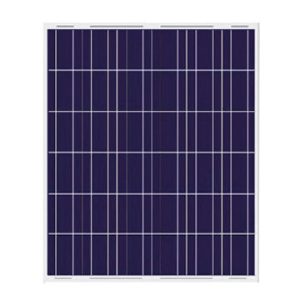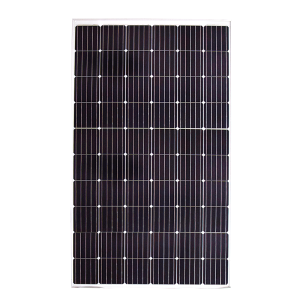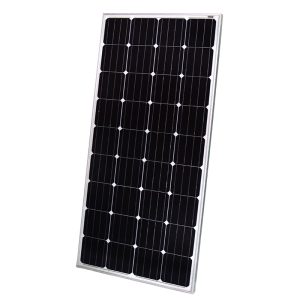Residential solar systems are becoming increasingly popular across the United States, providing homeowners with clean, renewable energy while reducing electricity bills. A 6.6 kilowatt (kW) system is a common size choice for many households looking to offset a majority of their power usage. But before installing solar panels, it’s important to understand the true cost.
So what does a typical 6.6 kW solar system cost? According to 2023 data, the average price is $16,620 before any incentives or tax credits. However, the final price can range from as low as $12,000 up to $20,000 depending on your location and various other factors explored throughout this article.
Key Factors That Influence 6.6 kW Solar System Pricing
The total expense of a 6.6 kW solar panel system is driven by several key considerations:
Location and Electricity Costs
Where you live significantly impacts solar pricing in several ways:
- Electricity Rates: Areas with high energy costs offer greater bill savings potential and faster payback on your solar investment.
- Installation Costs: Labor and permitting costs vary across different states and cities, altering total install expenses.
- Sun Exposure: More sunshine means greater energy production. This allows you to buy a smaller, less expensive system to meet your needs.
- Incentives: State/local solar incentives like tax credits and rebates help offset system costs.
Equipment Quality and Brand
Higher-end solar panels and components lead to better performance and reliability but also increase upfront pricing. Equipment costs make up over half the total price of installations. Key factors here include:
- Solar Panels: Premium brands like SunPower can cost $1.50-$3 per Watt, while cheaper options like Panasonic range from $0.70-$1.10 per Watt.
- Inverters, Racking, Monitoring: Critical components that enable system functioning. Higher-performing equipment costs more upfront.
Installer Experience and Reputation
More experienced solar companies often produce higher quality installations but tend to charge more. Be sure to get multiple quotes from both local and national firms.
National Average Cost for 6.6 kW Solar Systems
According to the most recent national average solar pricing data, a 6.6 kW solar system costs approximately $16,620 before factoring any financial incentives or tax credits.
After claiming the current federal solar tax credit, the final price drops to around $12,299. Keep in mind that additional state/local solar incentives could reduce costs even further.
Some key national solar pricing figures include:
- $2.77 per Watt national average for solar installations
- 6.6 kW system size x $2.77 per Watt = $18,282 total cost
- 26% federal solar tax credit reduces cost by $4,753
So in total, the typical range is $12,000 to $20,000 for a 6.6 kW residential system.
State-by-State Price Ranges
Solar pricing can vary drastically across different states. Here is a comparison of estimated 6.6 kW system costs by state before incentives:
| State | 6.6 kW System Price Range |
|---|---|
| Arizona | $12,420 – $15,540 |
| California | $14,400 – $17,880 |
| Florida | $12,840 – $16,440 |
| Massachusetts | $16,500 – $20,820 |
| New Jersey | $14,400 – $19,080 |
| New York | $16,260 – $21,660 |
| Texas | $13,620 – $18,060 |
As shown above, Massachusetts and New York are among the most expensive due to higher equipment and labor costs. Meanwhile, states like Texas and Arizona tend to have lower pricing thanks in part to ample sun exposure.
Always be sure to get quotes from multiple local installers to find the best deal. It’s also wise to take advantage of available incentives in your area.
Key Factors That Influence 6.6 kW Pricing
Now that we’ve explored average costs, let’s take a closer look at what impacts 6.6 kW solar system pricing:
Solar Equipment Quality & Brand
Higher-performing solar panels and components lead to greater energy production over time. However, premium brands also cost more upfront:
- Solar Panels: SunPower ($1.50-$3/Watt) vs Panasonic ($0.70-$1.10/Watt)
- Inverters, Racking, Monitoring: Also affect system performance and pricing
Ultimately, investing in quality equipment yields better long-term reliability, warranties, and energy savings.
Installer Experience & Reviews
More seasoned solar companies typically offer superior workmanship and service. However, large national firms usually charge higher rates than local installers.
Be sure to get quotes from both small and large companies. Check online reviews and credentials as well to find the best fit.
Available Incentives & Rebates
State/federal incentives like tax credits plus utility rebates can reduce solar pricing. For example:
- Federal Solar Tax Credit: 26% of system cost (in 2023)
- State Tax Credits & Rebates: $500 to $5,000+ depending on location
- Net Metering Savings: Bill credits for solar energy sent back to grid
Area Sun Exposure
More sunshine = greater energy yield from your panels. So sunnier locations can use smaller, less expensive systems to meet energy needs.
For example, a 6.6 kW system in Miami, FL with high sun exposure is likely to produce 30%+ more annual energy than the same system in Seattle, WA.
Electricity Production Estimates from 6.6 kW Solar
In addition to upfront pricing, it’s helpful to understand the energy yield you can expect from a 6.6 kW system. This depends largely on your geographic location and average sun exposure.
Some key electricity production estimates include:
- National Average: 8,000-10,000 kWh per year for 6.6 kW solar
- Sunnier Cities: Miami, Phoenix systems yield up to 30% more energy
- Cloudier Cities: Seattle, Boston systems produce comparatively less energy
Check out this comparison of estimated daily/monthly/yearly solar production from a 6.6 kW system across various US cities:
| City | Est. Daily kWh | Est. Monthly kWh | Est. Annual kWh |
|---|---|---|---|
| Miami, FL | 24.4 | 741 | 8,894 |
| Seattle, WA | 18.9 | 577 | 6,924 |
Return on Investment & Bill Savings
In addition to environmental benefits, solar panels can provide significant long-term financial savings in the form of lower electricity bills. Key metrics to consider include:
- Payback Period: # of years for energy savings to offset system cost
- First Year Utility Savings: Bill reduction in the first 12 months post-install
For example, analysis shows 6.6 kW solar systems in New Jersey can offer:
- Payback Period: 6-8 years on average
- First Year Savings: Around $1,100 per year
Payback periods and savings figures vary across different locations based on local electricity rates, sun exposure, and incentives. Be sure to discuss bill savings goals with installers.
Conclusion & Key Takeaways
Installing a solar panel system is a major investment, so conducting thorough research is essential before moving forward. To recap key details on 6.6 kW system pricing:
- National Average Cost: Approximately $16,620 before incentives, $12,299 after tax credit
- State Price Ranges: From $12k (AZ) up to $21k (NY) on average
- Electricity Production: 8,000-10,000 kWh per year typically
- ROI & Savings: Payback period of 6-8 years in optimal scenarios
Be sure to get quotes from multiple local solar companies and explore all available financial incentives. And remember to discuss electricity usage goals to determine the ideal system size to meet your household’s needs.



